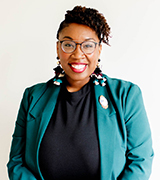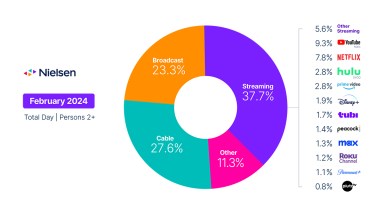
Once too often, I’ve heard, “Slavery happened a long time ago, why can’t we just get over it?”
The truth is, slavery is just one chapter among many events and policies which created the systemic racism that reverberates throughout generations. As a country, we’ve mostly looked to move on and bury the worst of these stories, skewing Americans’ perception of what African Americans are facing today.
As viewers, content creators, storytellers and journalists, we can demand more for and of ourselves to expand the African American narrative. In this way, we can truly understand the challenges that the Black community has had to endure and the full scope of how much they’ve had to rebuild.
Case in point: In 1921, 10,000 White residents descended upon a thriving wealthy Black neighborhood known as “Black Wall Street” in Tulsa, Okla., with the intent of erasing the community and all its residents. No one was held responsible for the destruction of this community during this little known event, now referred to as The Greenwood Massacre or the Tulsa Race Massacre. In the wake of the attack, those in power sought to shift blame to the African American victims, erasing their suffering, as well as the success that came before it, including from history books. It was only in the last year that the history of Black Wall Street was formally added to the state’s curriculum.
Denied insurance claims and other reparations, this thriving Black economy was obliterated. A century later, Black Tulsans make up 15% of the population, but just 3% of Black households in Tulsa have a six-figure income, and only 5% are small business owners according to Nielsen Scarborough.
This story isn’t just about the death of a community. It’s also about controlling and limiting a broader narrative about what African Americans had achieved—and how what they had achieved was destroyed.
Limiting the narrative around Black achievement still plays out in our media today. While representation of Black talent on television today is high, 16% in 2020, the themes and roles African Americans are most often seen in are limited primarily to reality shows, drama, horror, sports, music and “urban” themed programming.
For example, representation drops when it comes to broadcast and cable political news genres, which have the power and impact to shape the American perspective on policy. Even though Black audiences watched more than 15% of the minutes viewed, Black leads and announcers had only a 6% share of the screen time in this genre, according to Gracenote Inclusion Analytics. In fact, 85% of the most-viewed programming covering our politics exclude Black talent.
Being seen for everything we achieve as African Americans and the nuance of everything we have overcome matters. The Greenwood Massacre is one example among many of how tragedies of the past still impact us today. Had the access and influence of Black Wall Street been inherited by the residents of Greenwood instead of erased, there’s no telling where Black people in Tulsa, or across the country would be 100 years later. This cycle of uprooting Black progress, from the destruction of communities, typecasting into narrow roles in media, or diminishing civil rights, are just some of the reasons why we see an emphasis on ownership in today’s movement toward racial justice.
Now is the time to break the cycle. Because we can, and should, correct the course going forward. Telling the complete history of African Americans, no matter how hard it is to hear, and letting more Black voices tell their stories, are steps we can take today to reframe how the community is viewed as well as to raise awareness around the systems and policies that are racially biased.
It’s at least a century overdue.
Recommended Reading:
- What Was the Tulsa Race Massacre? | History
- 1921 Tulsa Race Massacre
- Tulsa Race Massacre reparations bill introduced in Congress
- The 1619 Project
- About this Collection | African American Perspectives: Materials Selected from the Rare Book Collection | Digital Collections
- Black History Milestones: Timeline – HISTORY
- The Case for Reparations by Ta-Nehisi Coates



